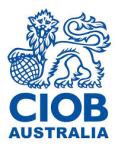 Governance uses a number of terms, this blog is designed to provide a set of referenced definitions for the different terms and suggest a hierarchy for use by an organisation’s governing body.
Governance uses a number of terms, this blog is designed to provide a set of referenced definitions for the different terms and suggest a hierarchy for use by an organisation’s governing body.
Defining Organisational Governance
Governance: The use of influence or power to direct, control and regulate the actions and affairs of others. Organisational Governance, developing systems and using influence to direct, control and regulate the actions of the organisation’s management and staff (see: Defining Governance).
Governing: The action of using authority to direct, control and regulate an organisation; and taking responsibility for the performance and conformance of the people within the organisation.
Governing body: the person, group or entity accountable to the organisation’s owners, and the wider stakeholder community, for the performance and conformance of the organisation they govern (eg, a corporation’s Board of Directors).
Conditions Precedent
The conditions needed for developing and implanting an effective governance paradigm are for the governing body to determine the objectives of the organisation and understand the concepts of good governance.
Objective: A specific result that the organisation aims to achieve within a time frame, using available resources; a goal or target to be achieved. The organisation’s objectives are derived from its vision and mission statement; apply to both the organisation and its governance, and underlie its strategic planning activities. Objectives should be specific and measureable.
Concept: An abstraction or generalisation from experience or the result of a transformation of existing ideas. The concept is reified (made real) by all of its actual or potential instances, whether these are things in the real world or other ideas and mediates between thought, language, and referents.
The members of the governing body need to reach consensus on their view of ‘good governance’, in the context of their organisation’s purpose and objectives before being able to move to more concrete developments. Implementing ‘good governance’ requires the creation of an effective framework within the organisation supported by the documentation of the organisations governance objectives.
The Governance Framework
Governance Framework: The system through which the organization’s governance arrangements operate including the management structures, enabling factors and interfaces through which the work of the organisation’s management is directed and controlled and regulated.
Whilst the governing body retains overall accountability for governance, some of the functions required to implement governance throughout the organisation may be delegated to managerial staff or organisational entities under the supervision and control of managerial staff. These delegated governance roles, their responsibilities, authority and interrelationships must be clearly defined; as well as the decision making, oversight, and points of involvement and intervention retained by the governing body. (see: Governance Systems & Management Systems)
Functions: The purpose the system has been created to fulfil or undertake; the purpose of the system.
The function of governance is to establishing the organisation’s objectives, ethics and culture; develop a framework that can implement these factors and require appropriate oversight and assurance processes (see: The Functions of Governance).
The function of management is to use the organisation’s human and other resources to achieve its objectives; working within the parameters set by the governing body (see: The Functions of Management).
Governance functions and management functions may be performed at different levels and in different parts of the organisation, but everyone involved in governance and management have a shared responsibility to work proactively towards achieving the objectives of the organisation; and the governing body remains accountable for the performance and conformance of the organisation.
Documenting governance objectives
The objectives, the governance framework is to implement, need to be defined and documented. The starting point is the concepts of ‘good governance’ agree by the members of the governing body. The concepts need to be ‘made real’ in the form of a set of principles that encapsulate the values, ethics and cultural objectives the governing body intend the organisation to embody (see: Ethics and Leadership). These principles are the further refined and defined in a set of policies, procedures and methodologies.
Principle: A fundamental truth or proposition that serves as the foundation for a system of belief or behaviour or for a chain of reasoning. These are the fundamental propositions that define the way the system of governance will operate, and acceptable behaviours for the organisation.
Policy: A document describing what is to be done in particular situation that has been agreed by the organisation’s governing body and management. Policies are clear, simple statements of how the organisation intends to implement its governance principles, and are intended to influence and determine decisions, actions, and other matters. Policies will frequently link to externally imposed obligations such as laws preventing the bribery of foreign officials. In addition to the policy statement, guidelines may be issued to assist in the implementation of the policy.
Guidelines: A recommended practice that allows some discretion in its interpretation, implementation, or use, intended to assist in achieving a policy outcome or streamline a particular processes according to a set routine or sound practice.
Procedure: An established way of doing something, a series of actions conducted in a certain order or manner. Procedures document and describe how each policy (or element of a policy) will be put into effect within the organisation. Each procedure should outline:
– Who will do what
– What steps they need to take (see: The value of Standard Operating Procedures).
Each procedure may require specific practices or processes to be used to ensure a consistent outcome.
Practice: A method or rule used in a particular field or profession.
Process: A series of actions or steps taken in order to achieve a particular end. Each process takes a set of inputs, and applies defined tools and techniques in a methodological way to the inputs to create outputs.
A series of procedures (plus practices and processes) can be grouped together into a workflow, or methodology.
Methodology: A sequenced series of procedures for delivering an outcome (see: Methodologies). Methodologies describe:
– What should be done;
– When it should be done;
– Who should do the work; and
– How the work will be accomplished.
In a well governed organisation, it governance principles will influence the design of every methodology, process and procedure used in the conduct of its business.










